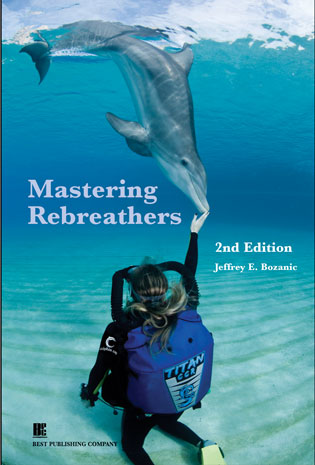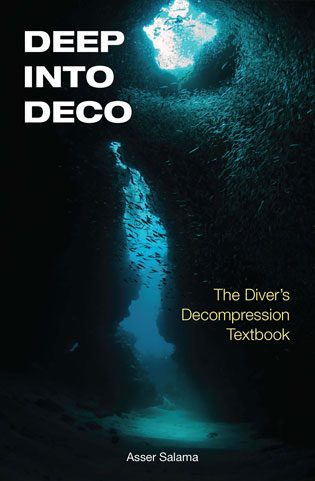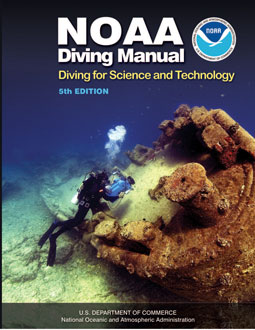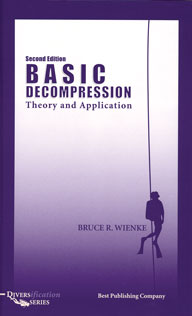DEPTH Blog
Rebreathers and the Recreational Diver by Jeffrey Bozanic, Ph.D.
When rebreather use started becoming common at the beginning of the twenty-first century, it was the deep, cave, and wreck divers who adopted the new technology. This equipment allowed them to go deeper, penetrate farther, and conserve expensive helium breathing gas. Because they could push the envelope of diving beyond where they could with traditional OC (open circuit) scuba, they were willing to tolerate the numerous increased maintenance responsibilities (as well as pay the hefty price tag associated with rebreathers, often $10,000 to $15,000 or more). But times have changed.
In the last decade, advances in rebreather technology have improved training, made them less costly, and significantly increased the ease of preparation, cleaning, and use. But rebreathers are still more expensive, more complex, and demand a greater degree of attention to detail than OC scuba. So why would a recreational diver consider a rebreather for his/her personal diving?
There are two primary advantages for the recreational, non-technical diver: Increased bottom time, and improved opportunity to observe marine life.
Increased Bottom Time
Two factors usually force divers to surface: Lack of breathing gas, and lack of bottom time. Rebreathers provide solutions for both of these problems. The 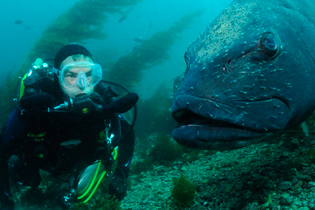 basic function of a rebreather is to capture and recirculate the gas we breathe. This vastly increases the duration of a given volume of gas. At best, in a shallow OC scuba dive (one or two feet below the surface), the equipment is only about 4% efficient. Ninety-six percent of the gas in every breath is wasted, exhaled as bubbles. As we venture deeper, gas efficiency decreases.
basic function of a rebreather is to capture and recirculate the gas we breathe. This vastly increases the duration of a given volume of gas. At best, in a shallow OC scuba dive (one or two feet below the surface), the equipment is only about 4% efficient. Ninety-six percent of the gas in every breath is wasted, exhaled as bubbles. As we venture deeper, gas efficiency decreases.
At 100 fsw (30 msw), we are only 1% efficient; 99% of every breath is lost. At that depth (well within recreational limits), breathing gas is four times denser due to the increase in ambient pressure. Yet, we do not consume any more oxygen at depth than we do when shallow, given equal workloads. Thus, the deeper we travel, the more oxygen we waste. Of course, since we do not metabolize the nitrogen in air (79% of the gas volume), all of that gas is wasted.
Imagine going to the gas station. Put one gallon of gasoline in your car. Then go to the attendant and pay for 100 gallons of fuel. Ouch!! That is exactly what we are doing as OC scuba divers!
A modern CCR (closed circuit rebreather) uses two gases, oxygen and diluent (a fancy name for air for the recreational diver). In normal dives, diluent is only used during descents. If you go down once, you could (theoretically) detach the diluent cylinder upon reaching the deepest depth and throw it away… although I do not recommend that! Oxygen is used at a continuous rate during the dive.
Oxygen use rate varies mostly with workload, but it is not very high. During a normal dive, I use about one liter of oxygen every minute. It does not matter if I 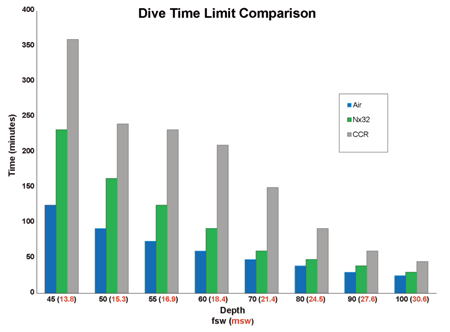 am at the surface, at 50 fsw (15 msw), 100 fsw (30 msw), or 300 fsw (90 msw). Thus, a given cylinder size will last me about the same amount of time, regardless of depth. My primary rebreather uses a 13 cf (2L) cylinder, smaller than a typical emergency gas supply cylinder used by OC divers. Yet that small cylinder will allow me to remain under water for over six hours! If I swap in a 21 cf (3L) cylinder, that jumps to ten hours. Rebreathers eliminate time pressure associated with limited gas supplies.
am at the surface, at 50 fsw (15 msw), 100 fsw (30 msw), or 300 fsw (90 msw). Thus, a given cylinder size will last me about the same amount of time, regardless of depth. My primary rebreather uses a 13 cf (2L) cylinder, smaller than a typical emergency gas supply cylinder used by OC divers. Yet that small cylinder will allow me to remain under water for over six hours! If I swap in a 21 cf (3L) cylinder, that jumps to ten hours. Rebreathers eliminate time pressure associated with limited gas supplies.
Mind you, you cannot stay at deep depths indefinitely, even if you have an adequate breathing gas supply. Divers still need to consider inert gas loading to avoid decompression sickness at the end of the dive. Yet, rebreathers provide benefits here as well. With the air diluent used by recreational divers, the inert gas is nitrogen. As with OC scuba, nitrogen dissolves into tissues when nitrogen pressures in the breathing mix exceed those in the body.
The greater the differential, the faster nitrogen is dissolved, and the less time we can remain at depth before having to surface to avoid staged decompression. There are two ways to minimize nitrogen loading: Stay shallow, or reduce the amount of nitrogen in the breathing gas.
Often we do not have the ability to stay shallow. Many of the sights we desire to see simply cannot be found in shallow water. Coelacanths only live in deep water. Black corals are not found at the surface. We cannot move a wreck to shallower water to suit our desires. But we can, to some degree, address the second option.
In OC scuba, we reduce nitrogen uptake by filling our cylinders with nitrox. Nitrox divers can use a standard nitrox mix, say Nx32 (a nitrogen-oxygen mixture with 32% oxygen) at 58 fsw (17 msw) to increase bottom time from an hour (using U.S. Navy Air Diving Tables) to 1½ hours. This 150% increase in bottom time is permitted because of the reduced percentage of nitrogen in the breathing gas. But OC nitrox is limited by having to select a particular mixture before the dive. Once the cylinder is filled, the diver cannot change it. And many dive operations only provide one or two standard nitrox mixtures, which may not be the best mix for a dive to a given depth.
CCRs are essentially “on-the-fly” nitrox mixing machines. They are capable of providing an optimal mix for whatever depth you are at. In the previous example, a CCR allows a dive time of nearly four hours, a 400% increase! Suddenly, whole new possibilities open for divers. On a typical dive vacation when I am diving with mixed groups (OC and CCR divers), I will get more than double the amount of bottom time during a week’s vacation compared to the closed OC diver. I get to spend LOTS more time under water, exploring, enjoying the scenery, and taking photographs of fish than I could otherwise. I love it!
Marine Life Observations
Speaking of taking pictures of fish, rebreathers provide another benefit here as well. Many of the animals we enjoy observing shy away from divers. Some do this because we are big, and look threatening to them. There is little we can do about that. But a far larger number of animals avoid us not because we are large, but because we are noisy. Rebreathers can mitigate that problem.
Most of the noise we generate is from bubbles. For fish, often “bubbles mean troubles.” Bubbles mean shallow, rough water. Bubbles mean surf zones. And bubbles may also warn of predators. Whales and porpoises often use bubbles to herd and corral fish into tight groups before dashing in for the kill. Bubbles from OC scuba exhaust sound like these things.
In CCRs, gas is circulated over and over again. Except during ascent, bubbles are not emitted during normal operation. Quiet means peace, and CCR divers can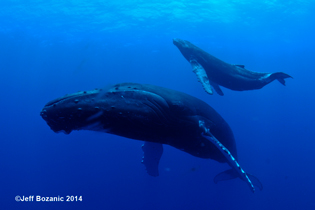 approach many species of which OC divers can only dream.
approach many species of which OC divers can only dream.
During one dive, I had two humpback whales swim up to me while I was completing a long decompression stop. In fact, the calf actually approached me to place its head against my shoulder, while Mom watched. They spent over an hour cavorting about me, going to the surface to catch a breath, and then returning again. Other divers on the boat jumped into the water with snorkeling gear, without impacting the whales’ behavior. But as soon as one diver donned an OC scuba tank, and slipped below the surface, things changed. He took three breathes, and by that time the whales had already departed.
I have seen that type of behavior with many animals… sharks, gobies, shrimp, dolphins, large bat rays, 300 pound (135 kg) black sea bass… the list goes on. In fact, a study my son did for a science fair project comparing fish counts with divers wearing OC scuba versus CCRs found a 100% increase in the number of fish seen. Simply put, you see more with a rebreather than you do with OC scuba.
What Should You Do?
So, given the above, should all recreational divers switch to rebreathers? I do not think so. Rebreathers are tools just like snorkels, OC scuba, and deep sea submersibles. Many of the tools allow us to observe similar things. A diver can observe and play with garibaldi (a shallow water ocean fish species living off the California coast) while free diving with a snorkel, with OC scuba, or with rebreathers. Both snorkels and OC scuba are simpler and less expensive than CCRs. There is no need to use the more expensive and complex equipment.
But if you want to spend more time under water, get closer to shy animals, or get unusual marine life photographs, then rebreathers might be the better tool for you. If you feel the desire for some of these benefits, then I would suggest researching the topic further. I found rebreathers opened completely new horizons for me, allowing me to see things I thought I never would. Safe diving!
About the Author
Jeff Bozanic is an active diving educator and author who has been involved in many management positions in the recreational diving community. Jeff was 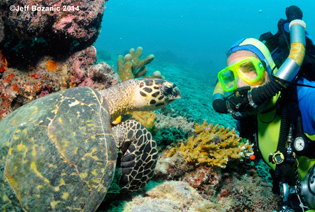 certified as an Instructor by NAUI in 1978, the NSS-CDS ub 1983, NACD in 1988, HSA in 1988m IANTD in 1993, and TDI in 1994. He has been teaching technical diving since 1983, and holds Instructr Trainer credentials for levels up to and including Rebreather and Advanced Trimix.
certified as an Instructor by NAUI in 1978, the NSS-CDS ub 1983, NACD in 1988, HSA in 1988m IANTD in 1993, and TDI in 1994. He has been teaching technical diving since 1983, and holds Instructr Trainer credentials for levels up to and including Rebreather and Advanced Trimix.
Jeff's formal education includes degrees in Underwater Occupations (AA), Geology (BS), Environmental Education (MA), International Marketing (MBA), and Education (PhD). In addition, he completed several years of graduate level studies in natural resource management and marine geochemistry (oceanography).
We invite you to download this article as a PDF and circulate it to your dive buddies, or place it in your dive club newsletter. Enjoy! ![]() Click to Download Now
Click to Download Now
SUGGESTED READING AND RESOURCES
Go to www.bestpub.com for additional articles, books, and products relevant to technical and rebreather diving.
When you subscribe to the blog, we will send you an e-mail when there are new updates on the site so you wouldn't miss them.


